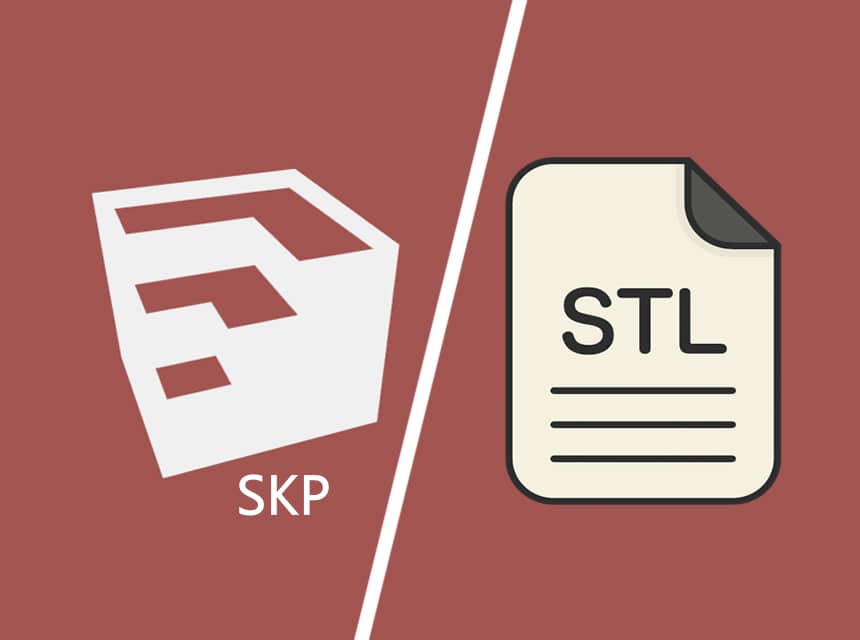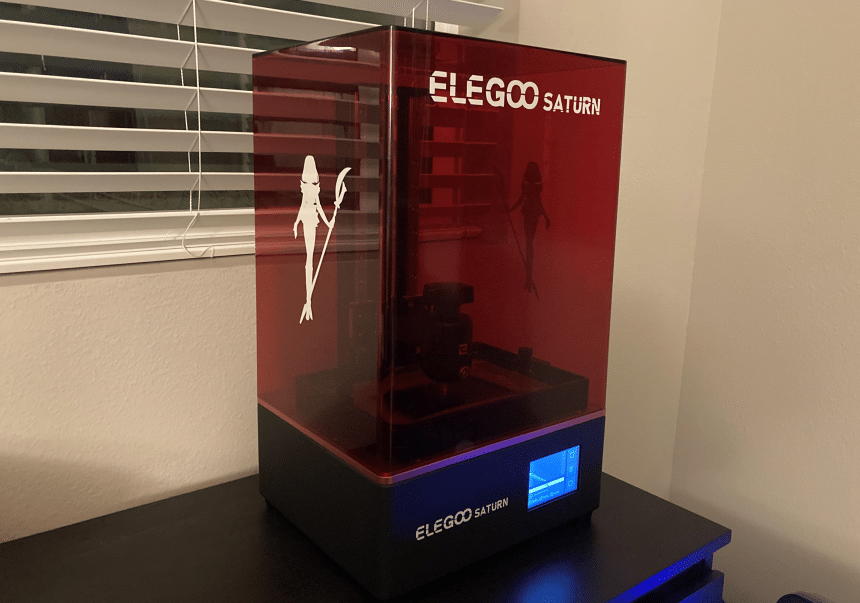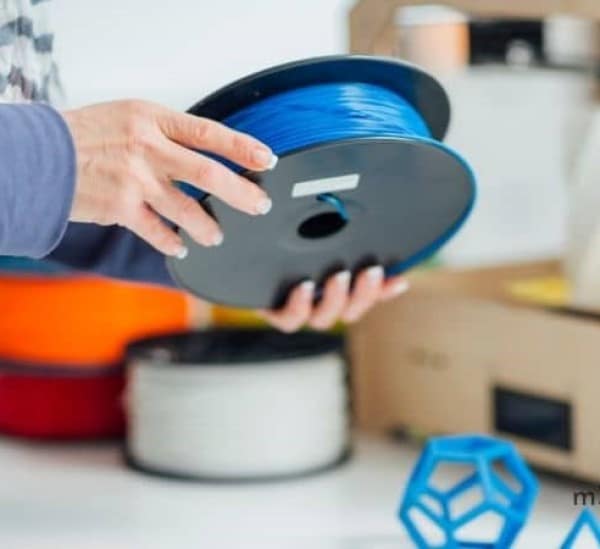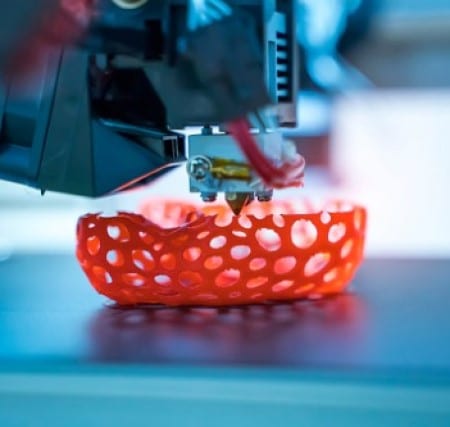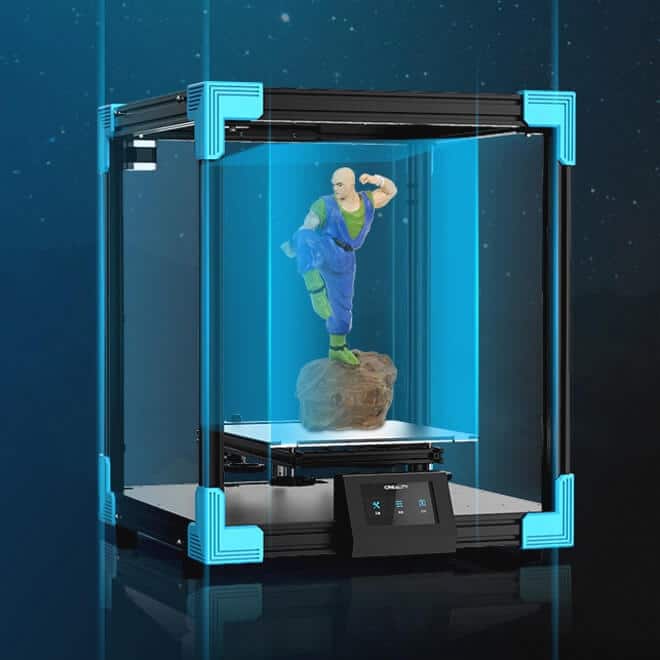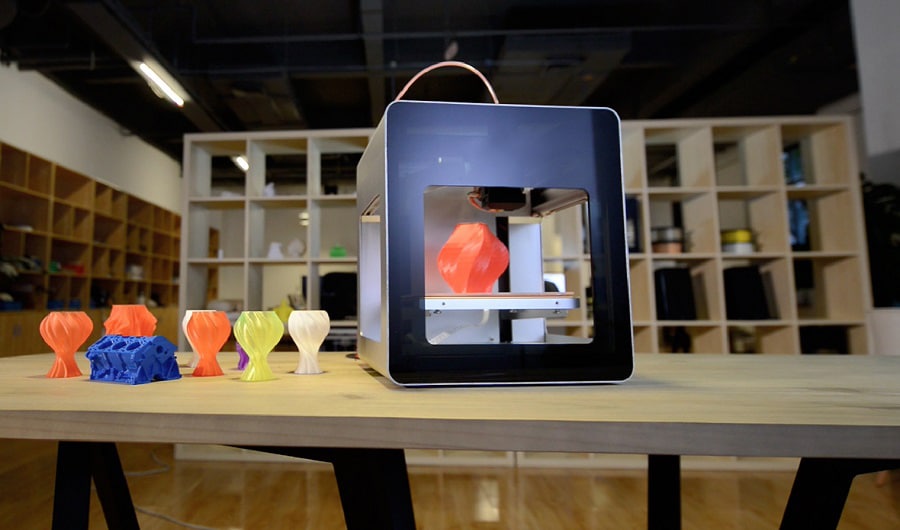

By using just any old computer for 3D printing, you may have had to deal with slow processing speeds, overheating, and in the worst-case scenarios, the dreaded blue screen of death that happens when you overtax your computer. On the other hand, some PCs are equipped with the resources to handle such projects easily.
Having tested 25 of the so-called best computers for 3D printing, 6 lived up to the billing with the best pick Dell Inspiron 16 5625 and are listed below. We considered the processors, graphics card, and RAM, given these components determine the firepower of the computer and how well it can handle the demands of 3D printing. Next, we considered display parameters, given they determine how well you can see your 3D models before printing. We also considered everyday use features that may play a part in 3D printing,s like connectivity, portability, software compatibility, etc.
We chose the Dell Inspiron 16 5625 as our Editor’s Choice as it offers one of the best CPU, graphics, RAM, and affordability combinations. As for the CPU, it’s an eight-core, 16-thread AMD Ryzen7 5825U with built-in AMD Radeon graphics. It’s capable of 4.5 GHz speeds meaning it should be able to handle the demands of 3D printing. Also, with 16 GB RAM, buyers have more than enough working memory to use the PC for other tasks while printing. Other perks include an impressive display that’s easy on the eyes even when you stare at the screen for long periods.
The Dell Inspiron 16 5625 can be compared to the Dell Inspiron 13 5310 because they’re both from the same company. Additionally, the Dell Inspiron 13 uses the AMD Ryzen 7 CPU’s equivalent on Intel’s line-up, the Intel Core i7. With more cores and a higher clock speed, the Dell Inspiron 16 is better for multitasking, so if you need to type a paper while simultaneously using CAD software to design your next project, it’s a great option. Conversely, given that the Dell Inspiron 13 has dedicated NVIDIA GeForce MX450 graphics, it may have more power to create complex designs in CAD software.
Our team gave the ASUS ZenBook 14 Ultra-Slim Laptop the Premium Pick nomination for several reasons besides the price. One, it has an impressive Intel Core i7-10510U working with a dedicated NVIDIA GeForce MX250 graphics processor. Included with the purchase is 16 GB of RAM alongside a 14” NanoBezel screen, that’s great to look at. Also, it has a 5.65-inch interactive touchscreen for a trackpad setting it apart from other PCs. This feature can even help switch between apps, further exemplifying its multitasking ability.
The ASUS ZenBook 14 Ultra-Slim Laptop compares easily with the ASUS – TUF Gaming FX705GM Laptop from the same manufacturer. At face value, they also use similar Intel Core i7 CPUs. However, the if you want a laptop you can take to work and then bring home to work on your 3D projects, the ZenBook is an excellent pick. It’s compact, easy to carry, looks professional, and has just about the right performance for both tasks. The TUF Gaming FX705GM is for those who want to switch between 3D printing and gaming with graphics capabilities and screen real estate to handle both tasks.
The HP i5 Touch Premium Laptop makes the cut for our Best Value option. While it costs almost half as much as some of the best computers for 3D printing listed, it has a few tricks up its sleeve. These include a touchscreen, a 10th-generation Intel Core i5 CPU, and 16GB of RAM. While the CPU included doesn’t match up to options like the Intel Core i7 or the AMD Ryzen 7, it still has enough oomph for 3D printing. It can even run most CAD software with its 3.6 GHz clock speed.
This model is one of two HP laptops listed, the other being the HP Pavilion 15 Laptop. In addition to being from the same brand, the two PCs also have the least powerful CPUs on the list. As such, if you’re partial to Intel central processing units, the HP i5 Touch Premium Laptop also has the added advantage of having a touchscreen. If you prefer AMD processors, the AMD Athlon Silver 3050U works just as well. That said, you also get the option of 32GB RAM and 1TB storage, none of which is available with the Touch Premium model.
Given the integrated QHD display panel, we picked the Dell Inspiron 13 5310 as the best PC for miniature 3D prints. The sharper images from the screen should allow you to spot even the tiniest mistakes and correct them before you start printing. It’s also no slouch on the performance front with an Intel Core i7 11th generation chip under the hood. This CPU is coupled with an NVIDIA GeForce MX450, and while it may be considered an entry-level graphics card in the gaming world, it’s a workhorse where 3D printing is concerned.
The Dell Inspiron 13 5310 and ASUS- TUF Gaming FX705GM Laptop are available in the same price range, although the former is slightly more expensive. Also, they both spot Intel Core i7 chips alongside 16GB of RAM and dedicated NVIDIA graphics cards. However, the Inspiron features a more modern CPU and a simpler design making it a great multipurpose laptop. On the other hand, if you only want a PC for 3D prints and other graphics-intensive tasks like playing games or rendering videos, ASUS has better resources for the job. This is because the NVIDIA GeForce GTX 1060 graphics card is more powerful than the NVIDIA GeForce MX450.
The ASUS – TUF Gaming FX705GM Laptop is our pick for the Best 3D Printing PC for High-Resolution 3D Modeling and Printing. Its powerful NVIDIA GeForce GTX 1060 graphics card offers enough firepower for heavy graphics projects, and with the 16GB system RAM, it even allows for multitasking. The Intel Core i7 8750H CPU is no slouch either, even though it’s an eighth-generation model. Also notable is the 17.3” full HD display making it the laptop with the largest screen on the list.
The ASUS – TUF Gaming FX705GM is from the same ASUS gaming as options like the ASUS TUF Gaming F17. Some similarities include the 17.3” screen, RGB keyboards, and a 512 GB SSD. However, differences start to pop up in the RAM, GPU, and CP. The FX705GM model has 16GB RAM while the F17 only has 8GB allowing it to have the edge in multitasking. Also, it has more graphics card memory at 5GB compared to the F17’s 4GB. However, the biggest difference comes in the form of the CPU. Where the F17 uses an Intel Core i5, the FX205GM uses an Intel Core i7 chip with significantly more power and performance.
As for the HP Pavilion 15 Laptop, we consider it the best computer for 3D printing for beginners. It’s powered by an AMD Athlon 3050U, and although it’s not as impressive as a Ryzen 7, the 3.2 GHz clock speed is quite impressive. There’s also the integrated AMD Radeon Graphics that help boost performance when modeling and printing with CAD software. Overall, it provides the most RAM and storage configurations of any model on the list. In fact, the RAM ranges from 8GB to 32 GB. Regarding storage, you can get 128GB, 256GB, 512GB, or 1TB SSDs.
You can compare the HP Pavilion 15 Laptop with the HP i5 Touch Premium. Right off the bat, they have differences in resolution, CPUs used, and graphics performance. The i5 Premium Laptop even has touchscreen capabilities, while this Pavilion model does not. The i5 Premium is for those with budgetary resources to spare, given it’s much more expensive than the Pavilion 15. Buyers who have a little less to spend but still need enough RAM and CPU performance to handle light 3D modeling and printing needs should pick the Pavilion 15.
Shopping around for the best laptop computers for 3D printing is slightly different than shopping around for a work or play computer. However, this all depends on the intended use. Some want to do it as a hobby, while others want to sell 3D prints, which can, in turn, affect the PC they choose. Whatever the case, the best computer for 3D printing will be determined by the factors highlighted below.
When selecting the best computer for 3D printing, you look for a mixture of display parameters, connectivity, software compatibility, graphics, processing, storage, etc. Each mentioned area plays a part when you eventually sit down to render, model, and print 3D models.
Nevertheless, some people only use downloaded 3D models while others render their own. This can heavily affect what is deemed an acceptable printing PC and what isn’t. All in all, it boils down to the needs of the individual. That said, the parameters given below can provide a guide based on how you intend to proceed.
Printing quality is mostly determined by several other factors like graphics, display parameters, CPU, and software compatibility, most of which are covered in-depth below.
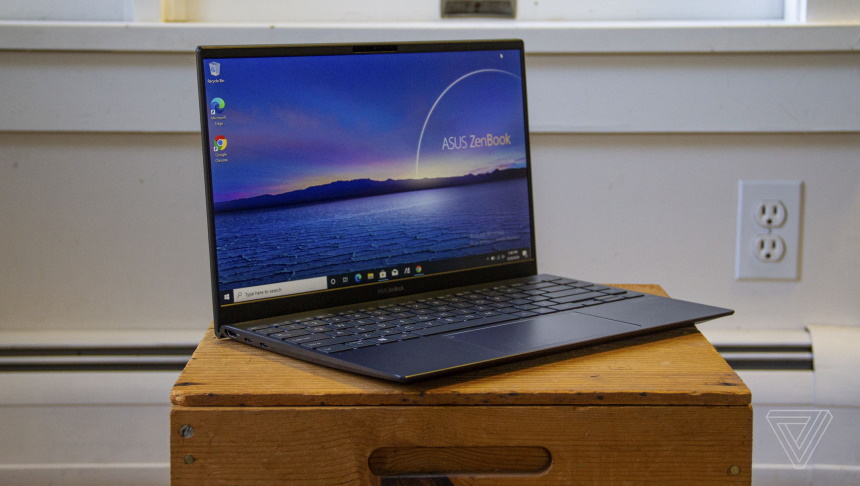
Display parameters may not seem as important to people who have lived without needing PCs for their 3D printing projects. However, they can help ensure you get the best out of your projects. Elements like screen brightness and resolution all play a part in ensuring you can see any potential mistakes in the end product.
If you’re using a dim display in bright conditions, you’re likely to make a mistake when rendering or modeling, which can be fatal to the model. You may not even notice until a couple of hours have gone by, forcing you to start over. As such, display parameters provided by options like the Dell Inspiron 13 5310 can be hugely important. This is particularly true with miniature prints, although you also need the appropriate 3D printer.
Connectivity is also important since you need to connect your PC to the 3D printer. This connection may need a cable or be wireless, depending on the type of 3D printer you’re using. As such, the connectivity options you have on your computer may influence compatibility. If your 3D printer has Bluetooth connectivity, you may want a PC with advanced Bluetooth capabilities.
Ultimately, you want connectivity options that facilitate the direct connection of your PC to the printer.
If you’re into 3D modeling, several software programs are necessary for your craft. Examples include CAD software for modeling and rendering your 3D prints. There are also software options available with the different 3D printers you use. Once installed on your PC, they allow you to control the 3D printer from afar through a wireless or wired connection.
However, the software has to be compatible with your PC in the first place. Some computer-aided design software options work better with Mac PCs, while others work better with Windows PCs. There are even those built for compatibility with Linux systems.
Ultimately, you want to ensure the software you intend to use is compatible with the PC you intend to buy. Often you can look at the system requirements necessary to run the software and cross-check that with the features of your computer.
Some software will only launch if you have a high-end graphics card. Others work on most PCs without much fuss.
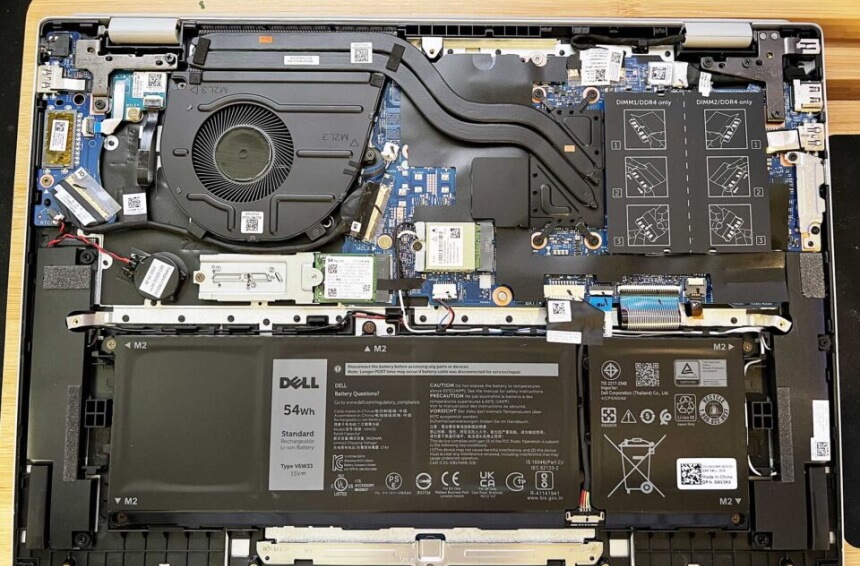
3D modeling, rendering, and printing can be resource-intensive, which is why you need the best processor you can get. The rule of thumb is the more cores you can get, the better, which is one reason the Dell Inspiron 16 5625 with an eight-core CPU was listed as our editor’s choice.
While you can make do with some of the lesser processors on the market, the experience just won’t be the same. Rendering may be slower, and your PC may hang a few times if the load gets too high.
Also, storage is just as important. You want a PC to store your old and new designs without running out of space. In this case, a model like the HP Pavilion 15 Laptop with its 1TB SSD option may be handy.
While battery life may not be the most important consideration, it can certainly be helpful. This is especially true for those who carry their laptops everywhere. You can get some modeling and rendering done at your favorite coffee shop with battery life to spare for that meeting or class you need to attend.
Furthermore, some printing sessions can extend for hours, and if you forget to plug in your PC, the process might be interrupted, forcing you to start over. With an eight-hour battery life, you needn’t worry about taking a nap and waking up to an unfinished project.
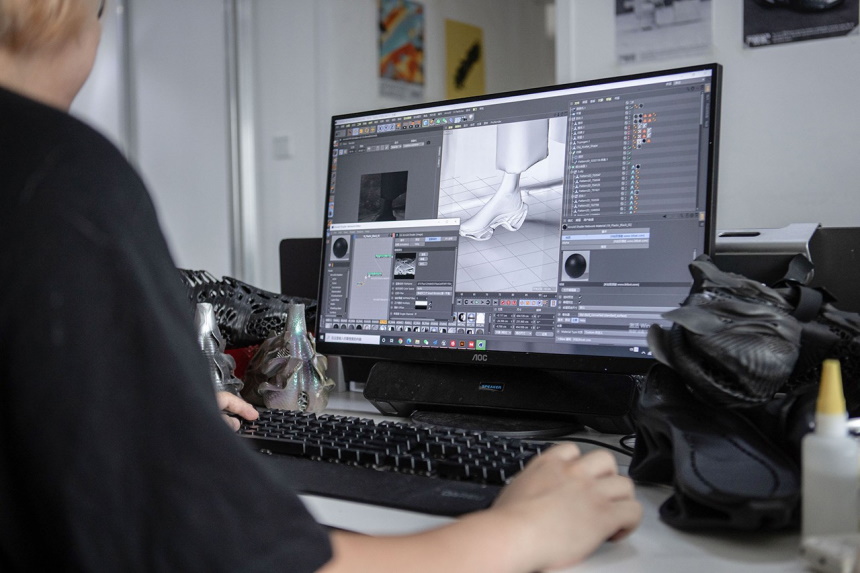
Graphics have played a huge part in our rankings, and for a good reason. They allow your computer to render 3D images and can be crucial in the modeling stage.
Like the CPU, the more powerful your graphics card is, the better. They also help take some of the stress off your storage and RAM, allowing you to multitask more with your computer. This is why dedicated graphics are recommended, especially if you plan to undertake graphics-intensive modeling projects.
You can still make do with integrated graphics. However, the process is likely to be slower and much less efficient.
Ease of use may be determined by your preferences and what you’ve had experience with in the past. For some users, macOS PCs are much easier to use since it’s what they’re used to. Others prefer Windows PCs since they have more experience with them and are familiar with the user interface.
Other elements that may affect the ease of use include options like the fingerprint reader provided with the Dell Inspiron 13 5310 that allows you to forego typing in a password to log in.
For those who take on 3D printing projects in different locations, the laptop’s dimensions and weight can be a huge asset or problem. Lighter, smaller PCs are easier to carry around.
However, if carrying your PC around isn’t important for you or you have an alternative laptop for attending classes, options like the ASUS – TUF Gaming FX705GM Laptop should be fine.
It’s worth noting heavier laptops and those with bigger dimensions also have their perks. In the case of the ASUS – TUF Gaming FX705GM, it means you get more screen real estate. Furthermore, the thicker, heavier design allows for the inclusion of a much more powerful graphics card than is available with other models.
Ultimately, the PC for 3D printing you pick is also going heavily influenced by the price. The different options are available at various price points. As such, even if you have a limited budget, you can still get a 3D printing laptop that works for you. That said, the more money you can spend, the better though you have to be careful to scrutinize the specifications and features before closing the deal.
Nevertheless, the price of the computer isn’t the only place where you can save on costs. There are also cheap 3D printers that may allow you to spend more on the PC.
Some 3D printers come with USB and SD card interfaces allowing them to work independently. As such, you may not need a computer to print. However, you do have to get the source material from somewhere before loading it onto the USB drive or SD card. In this case, having a PC on hand may be handy.
First, you need slicer software to help your printer understand the printing commands from your computer. Otherwise, the printer won’t be able to make sense of your 3D model. You may also need computer-aided design (CAD) software to create unique designs. However, some people can go their whole lives only using premade designs they download from the internet.
STL repair software may be great to have for when there’s an error on your 3D file.
Lastly, G-code viewers and analyzers may be handy to have.
Windows may be a better operating system for 3D printing and modeling since you have access to more software. However, macOS is not that far behind.
As long as the computer has enough RAM, processing power, and a suitable graphics card, it should be good enough for rendering. That said, the more taxing the rendering requirements, the higher the RAM, CPU, and graphics card specs you’ll need.
It’s possible to print 3D models without needing a computer though you’ll need a 3D printer with a USB port or SD card reader. If you want to learn more about 3D printing, our list of best 3D printing books can help you figure out how to go about it, including what to use when you don’t have a computer to work with.
Out of the six selections listed above, the Dell Inspiron 16 5625 is our Top Pick, given it has everything you could want in such a PC. Reasonable pricing, a powerful CPU, and adequate graphics.
Our second-favorite option, the ASUS ZenBook 14 Ultra-Slim Laptop, takes things a notch further with a top-tier design, unique features, and impressive performance figures backed by a powerful CPU. It’s easily among the best computers for 3D printing on the list, but the higher cost means it comes behind the Dell Inspiron 16 5625.
The HP i5 Touch Premium Laptop caters to the budget market and puts in as much power and performance as possible at this price point. The touchscreen is also a nice touch.
